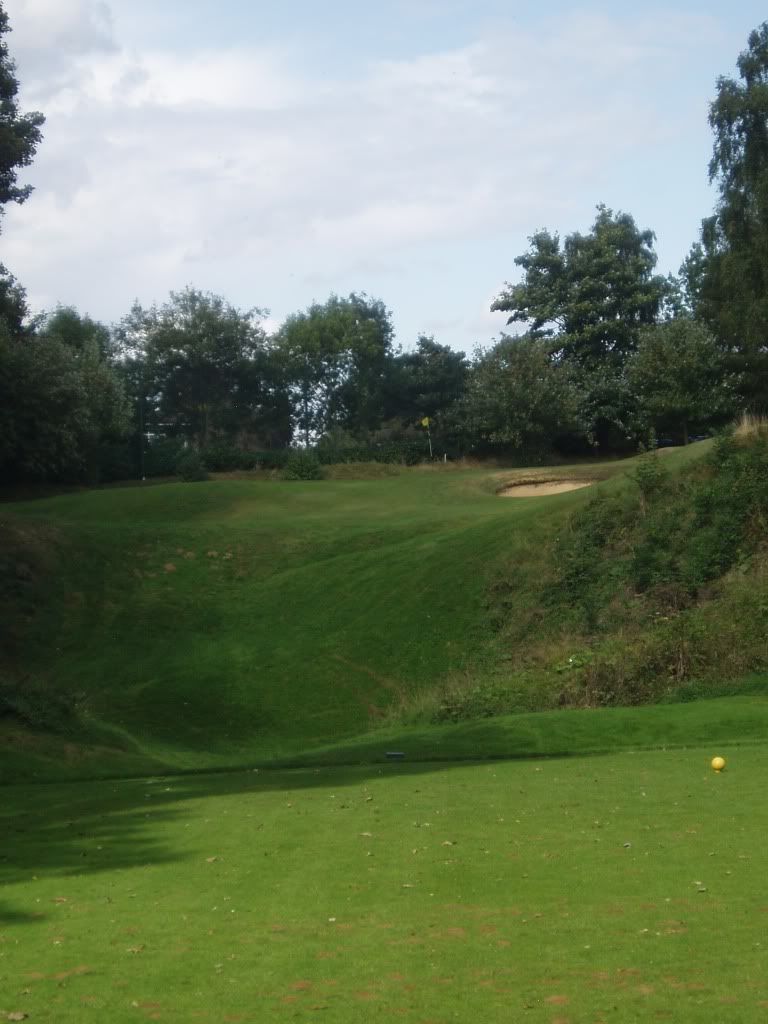10. 186 yards par 3

I have to say that the 10th is one of the most diabolically difficult par 3s I know. This is the one for which Markes built a new green. After the rebuild it was played at over 200 yards, which must have been fiendish to say the least. Pinsent chose to shorten it, using the earth from the old tee to build up a new one so that you could at least see the fate of your ball!



11. 532 yards par 5
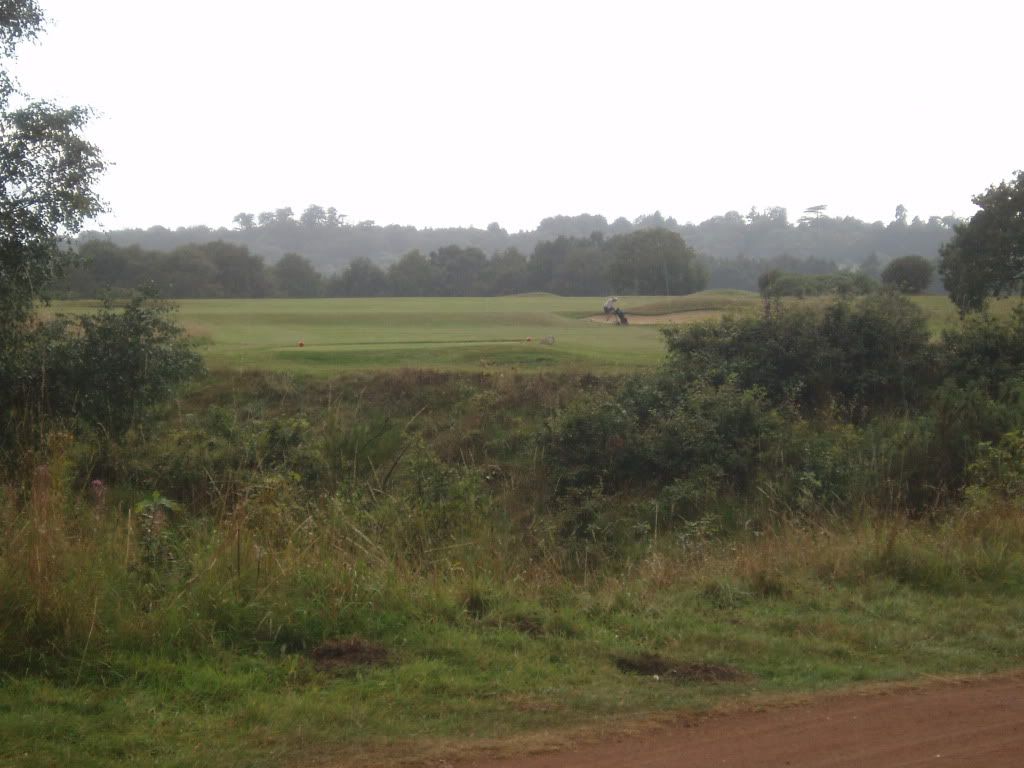
Markes clearly loved the vague drive Ė you are not quite sure where you ought to be going. What todayís golfer needs to be aware of are the cross-bunkers 75 yards short of the green and the various accompanying bunkers back to 129 yards from the green. On this downslope laying up is an art!

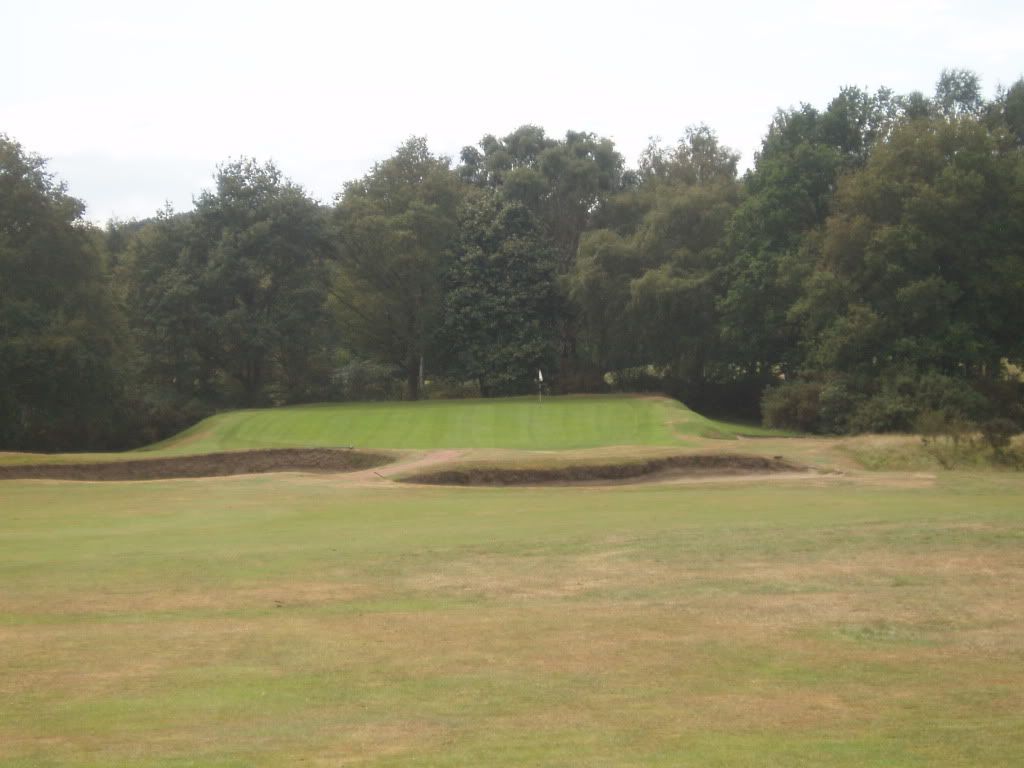
But you need to be pin-point with the approach, however many shots you may already have taken.
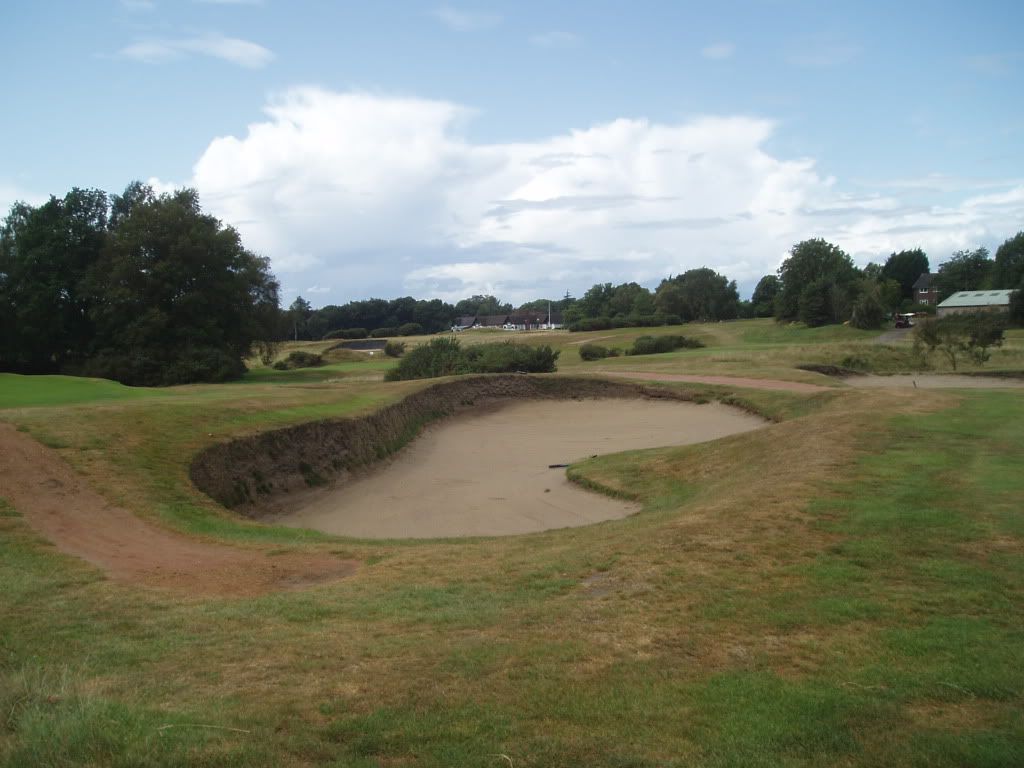
12. 395 yards par 4
Named Mae West you once drove out through twin mounds of an appropriate shape. You still do, but surely she didnít grow hair there.



There are mounds and bunkers out to the right and a serious bunker for big hitters out to the left.
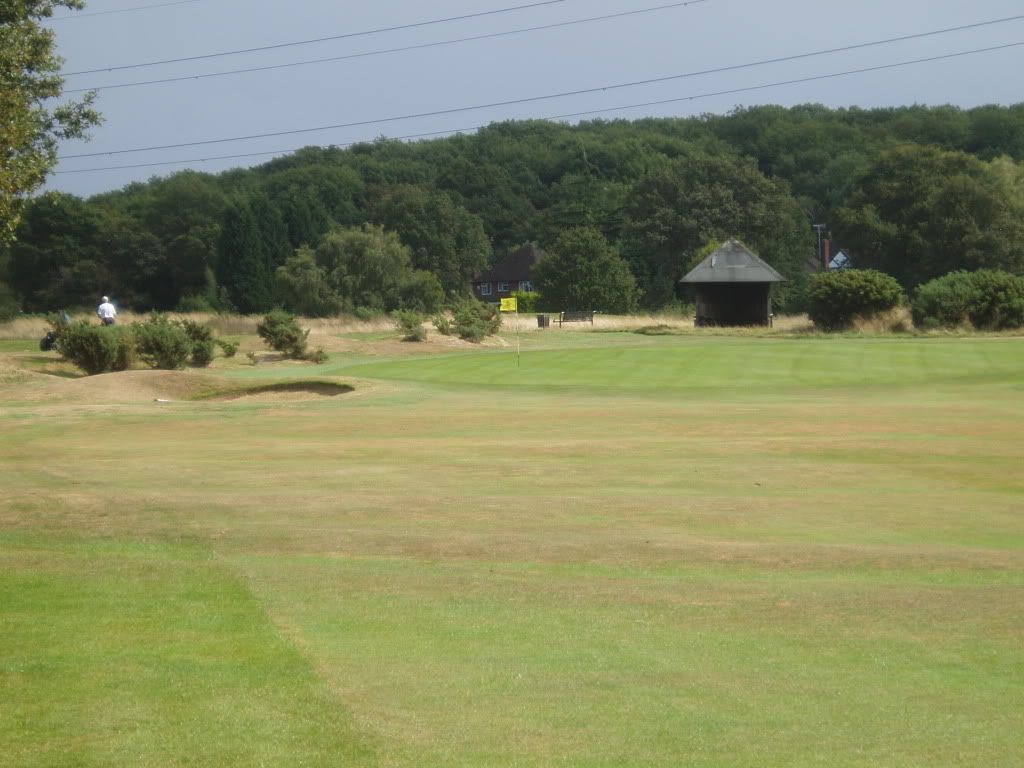
The shelter reminds of Ganton.
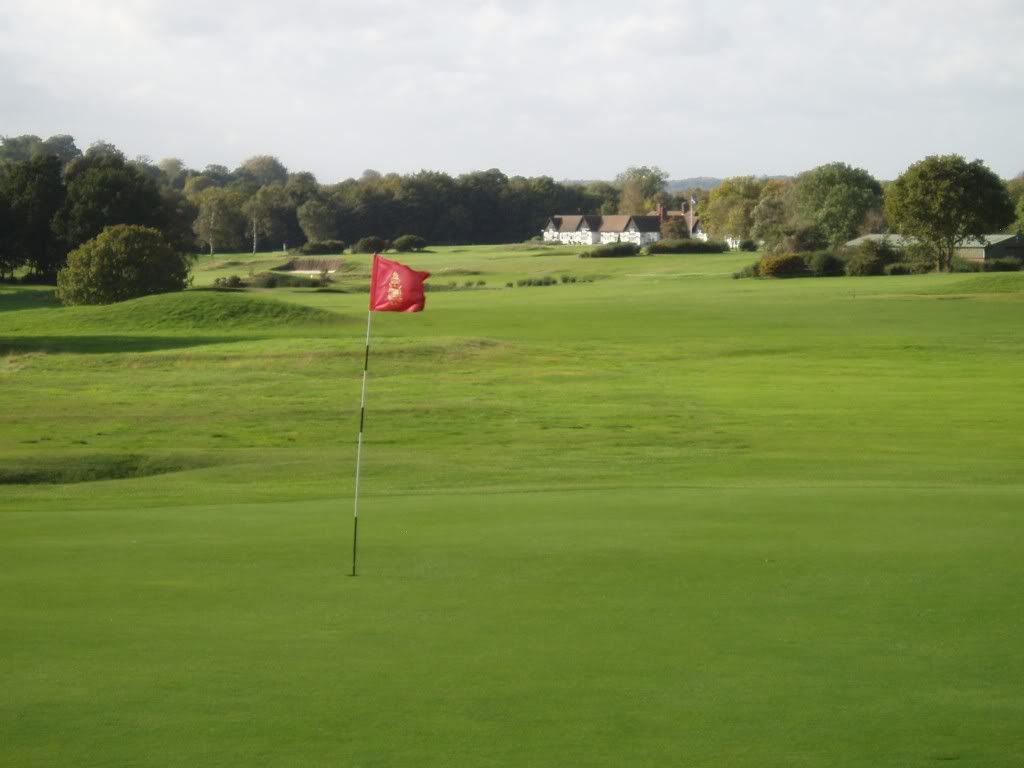
The great thing about this part of Sandy Lodge is that you are rarely out of sight of the clubhouse.
13. 327 yards par 4

A rather non-descript hole. Its name, Oxhey View, recalls a local club which was disbanded after the war to make way for a housing estate. Some of Oxheyís members (including a very influential captain) joined Sandy Lodge, but all had to be individually interviewed by Markes.

As you get a bit nearer you appreciate the efforts made to tighten up the hole.

The difficult pin positions are behind the left-hand bunkers and at the rear right where the green is hiher.
14. 532 yards par 5

This is another semi-blind drive. Before Pinsentís adding of visible bunkers to the right of the drive area this was a completely featureless hole.

It is quite a complex hole. It needs a marker post and there is an interruption to the fairway about 300 yards out from the tee. Even then, the approach to the green for tigers will be speculative. The rest of us need simply to make progress in the right direction without tangling with the bunkers which encroach on either side from 93 yards in.

This is not a green to miss left, right, or long. The perils are obvious.
15. 213 yards par 3
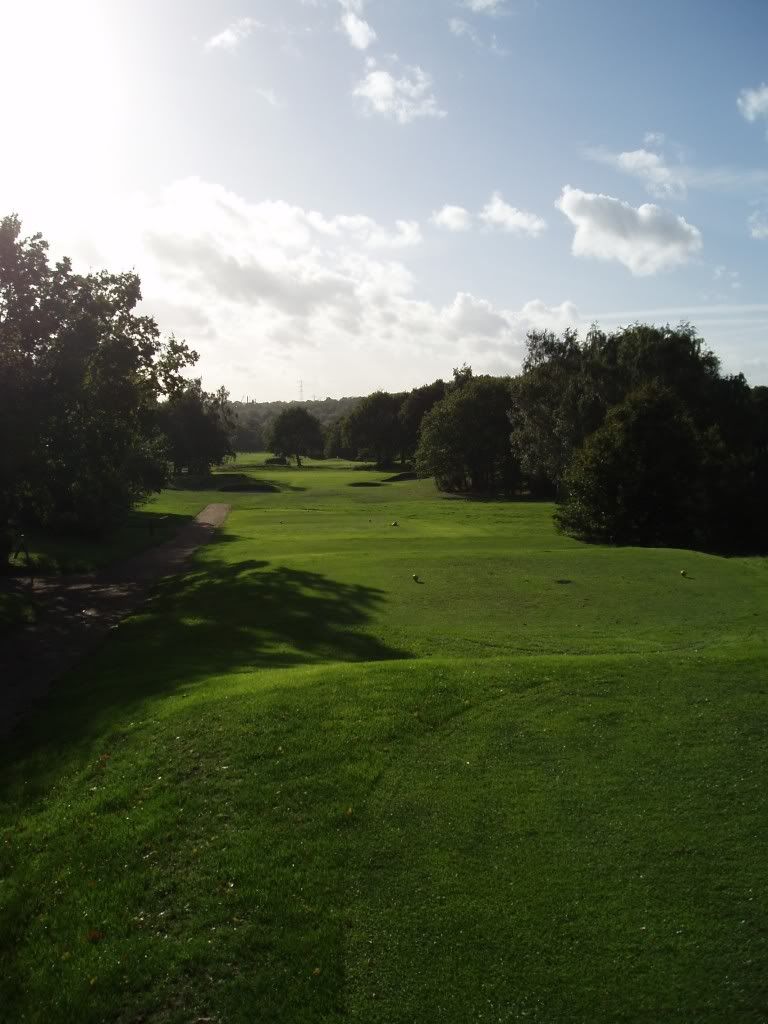
An attractive downhill par 3 to which no alterations have been made.

The bunkers mean business.
16. 439 yards par 4
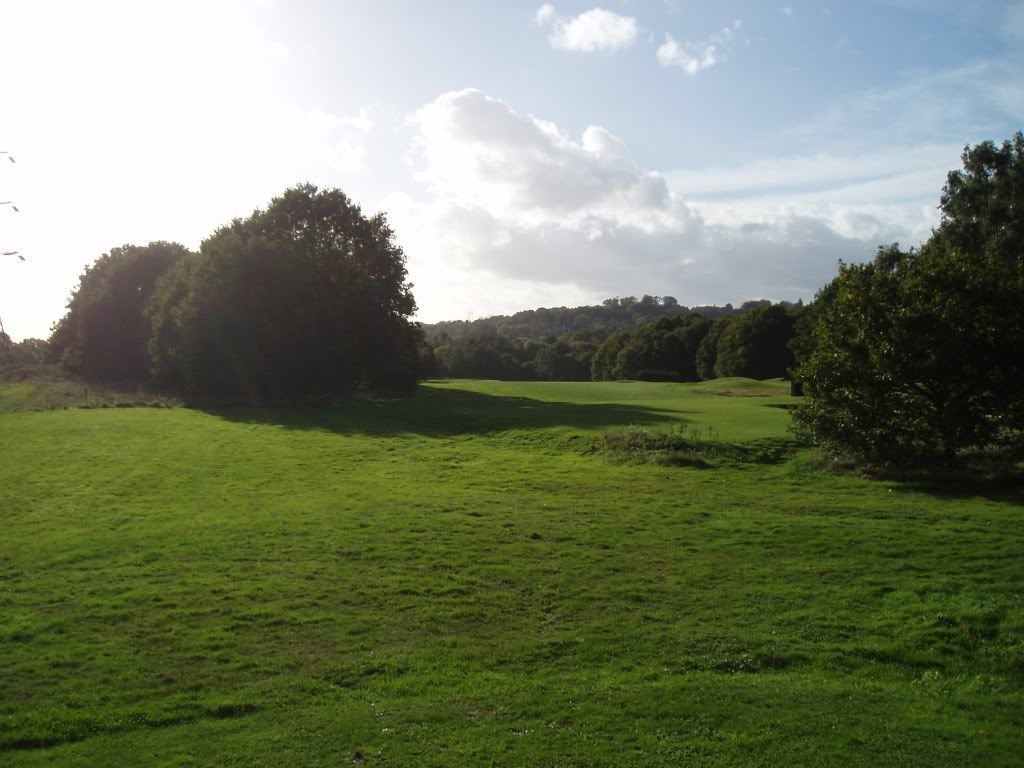
A new tee has been built some way back which brings into play new bunkers on the right of this left-to-right cambered fairway on a hole which veers from right to left. The medal tee is set at 399 yards.

The difficulties of approaching this downhill green are apparent with two bunkers short left of the green and two more abutting the putting surface to the fron right.
17. 508 yards par 5

A big, ranging dog-leg to the left. The main objective is to avoid driving bunkers on the right, but keep right enough to avoid being cut out by trees on the left, the inside of the dog-leg.


As you can see, you have to keep approaching this green from the right.

The relevant bunkers are in place to prevent you doing this unthinlingly.

There is a big front to back step on the green, which they once attempted to remove Ė but it was rejected.
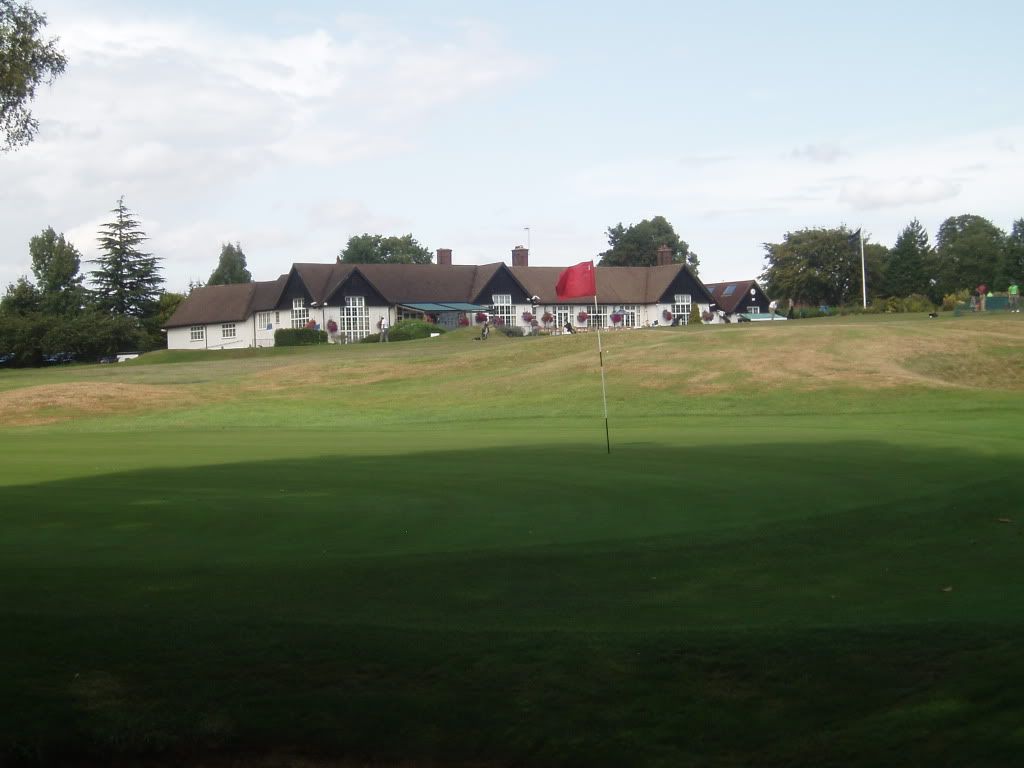
Nearly there!
18, 154 yards par 3
I am presented with a problem with this hole. It is a famous hole. But I cannot find out when it stopped being famous! I gather that it was once an all-or-nothing shot over a sand face. Ken Cotton came along in the 1950s with a plan to rationalise the hole but that was rejected. None of the living members remembers it as anything other than rather a messy bank. Pinsent has slightly stepped the bank so that those who donít make the carry are unlikely to find the ball, once again, at their feet.
